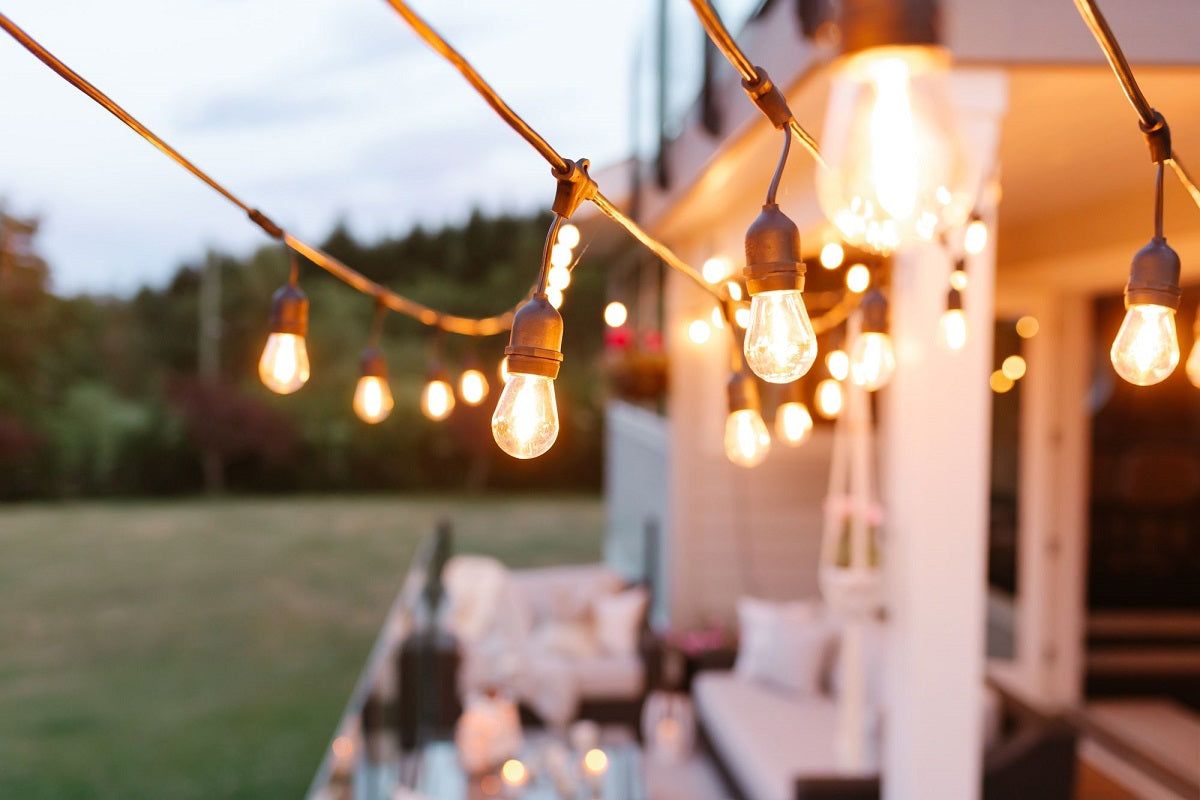Ⅰ. Introduction
LED string lights have become a popular lighting choice for both indoor and outdoor settings due to their versatility and aesthetic appeal. These flexible and energy-efficient lights are commonly used to add ambiance, style, and functionality to a wide range of spaces, creating a warm and inviting atmosphere.
In indoor settings, LED string lights are often used to decorate living rooms, bedrooms, and event spaces, providing a cozy and festive touch to the environment. In outdoor settings, these lights are utilized for patio lighting, garden decor, and outdoor events, enhancing the outdoor ambiance and creating a magical atmosphere. The versatility of LED string lights allows them to be incorporated into various settings, from home decor to commercial spaces, adding a touch of charm and illumination to any environment.
Ⅱ. Types of LED String Lights
When it comes to LED string lights, there is a wide range of options available for both indoor and outdoor use, each offering unique features and benefits.
Indoor LED String Lights:
- Indoor LED string lights are designed for use in interior spaces such as living rooms, bedrooms, and event venues.
- These lights come in various lengths, colors, and styles, allowing for customization to suit different decor themes and preferences.
- Indoor LED string lights are often used for accent lighting, creating a cozy and inviting atmosphere in homes and commercial settings.
Outdoor LED String Lights:
- Outdoor LED string lights are specifically designed to withstand the elements and provide illumination in outdoor spaces.
- These lights are weather-resistant and durable, making them ideal for outdoor use on patios, decks, gardens, and for special events.
- Outdoor LED string lights offer benefits such as energy efficiency, longevity, and the ability to create a magical ambiance in outdoor settings, enhancing the overall outdoor experience.
By choosing outdoor LED string lights, users can enjoy the beauty and functionality of these lights in their outdoor spaces while benefitting from their weather resistance and durability, ensuring long-lasting illumination and enjoyment in various outdoor settings.
III. Troubleshooting LED String Lights
- How many LED Christmas lights can I string together?
The number of LED Christmas lights that can be strung together depends on the wattage of the lights and the manufacturer's guidelines. Generally, it is recommended to connect no more than 3 to 5 sets of LED Christmas lights end-to-end to prevent overloading the circuit.
- Half a string of LED lights not working:
If only half a string of LED lights is working, it may indicate a loose or damaged connection in the string. To troubleshoot this issue, check for any loose or broken bulbs, frayed wires, or damaged sockets along the non-working section. Secure any loose connections and replace any damaged bulbs or sockets to restore the full functionality of the string.
- Identifying which bulb is out on a string of LED lights:
To identify which bulb is out on a string of LED lights, you can use a process of elimination. Start by inspecting each bulb carefully for any signs of damage or discoloration. Alternatively, you can use a bulb tester or a voltage detector tool to test each bulb individually to pinpoint the faulty one. Once the faulty bulb is identified, replace it with a new LED bulb to ensure the continuity of the light string.
By following these troubleshooting tips and techniques, users can effectively address common issues with LED string lights, ensuring optimal performance and illumination for both indoor and outdoor applications.
Ⅳ. Maintenance and Installation
Shortening Outdoor LED String Lights:
- To shorten outdoor LED string lights for a custom fit, carefully measure the desired length and identify the cutting points on the string.
- Use sharp scissors or wire cutters to trim the string lights at the designated cutting points, ensuring to follow the manufacturer's guidelines for cutting LED string lights.
- Seal the cut ends of the string lights with waterproof tape or silicone to protect the exposed wires and maintain the weather resistance of the lights.
Properly Hanging LED String Lights:
- Determine the layout and placement of the LED string lights to achieve the desired display, whether it be overhead, along a fence, or wrapped around trees or poles.
- Secure mounting hooks, clips, or adhesive tabs along the chosen installation area to support the string lights.
- Carefully hang the LED string lights along the designated path, ensuring they are evenly spaced and securely fastened to prevent sagging or drooping.
- Test the lights to ensure they are working properly before completing the installation.
Importance of Regular Maintenance:
- Regular maintenance is essential to ensure the longevity and performance of LED string lights.
- Inspect the lights periodically for any signs of damage, loose connections, or water infiltration, especially for outdoor lights exposed to the elements.
- Clean the light bulbs and wiring gently with a soft cloth to remove dirt, dust, and debris that can affect the brightness and appearance of the lights.
- Store LED string lights properly when not in use to protect them from damage and prolong their lifespan.
By following these maintenance and installation guidelines, users can customize and install outdoor LED string lights effectively, creating visually appealing displays while ensuring the longevity and optimal performance of the lights for years to come.
Ⅴ. Conclusion
LED string lights offer versatility and charm for indoor and outdoor settings. From troubleshooting tips to installation advice, these lights can transform spaces with their ambiance. Explore the possibilities of LED string lights to add a touch of magic to your surroundings and create inviting atmospheres that captivate and inspire.
Ⅵ. FAQ
1. Is it OK to leave LED string lights on all night?
LED lights may be left on all night without causing any safety risks, but doing so has certain advantages as well. For example, LED lights are perfect for use as nightlights since they emit a soft, calming glow that may help you safely explore your house at night.
2. What is the difference between LED and string lights?
Compared to normal lights, which have a 1,000-hour lifespan, LED bulbs have a roughly 50,000-hour lifespan. This implies that a string of LED lights will last 50 times longer than a string of conventional lights in terms of durability.
3. Do LED string lights use less electricity?
Changing to LED Christmas lights will save you money on energy costs. In addition to using 80–90% less energy than incandescent lights, they can last up to 100,000 hours, or almost ten years.

